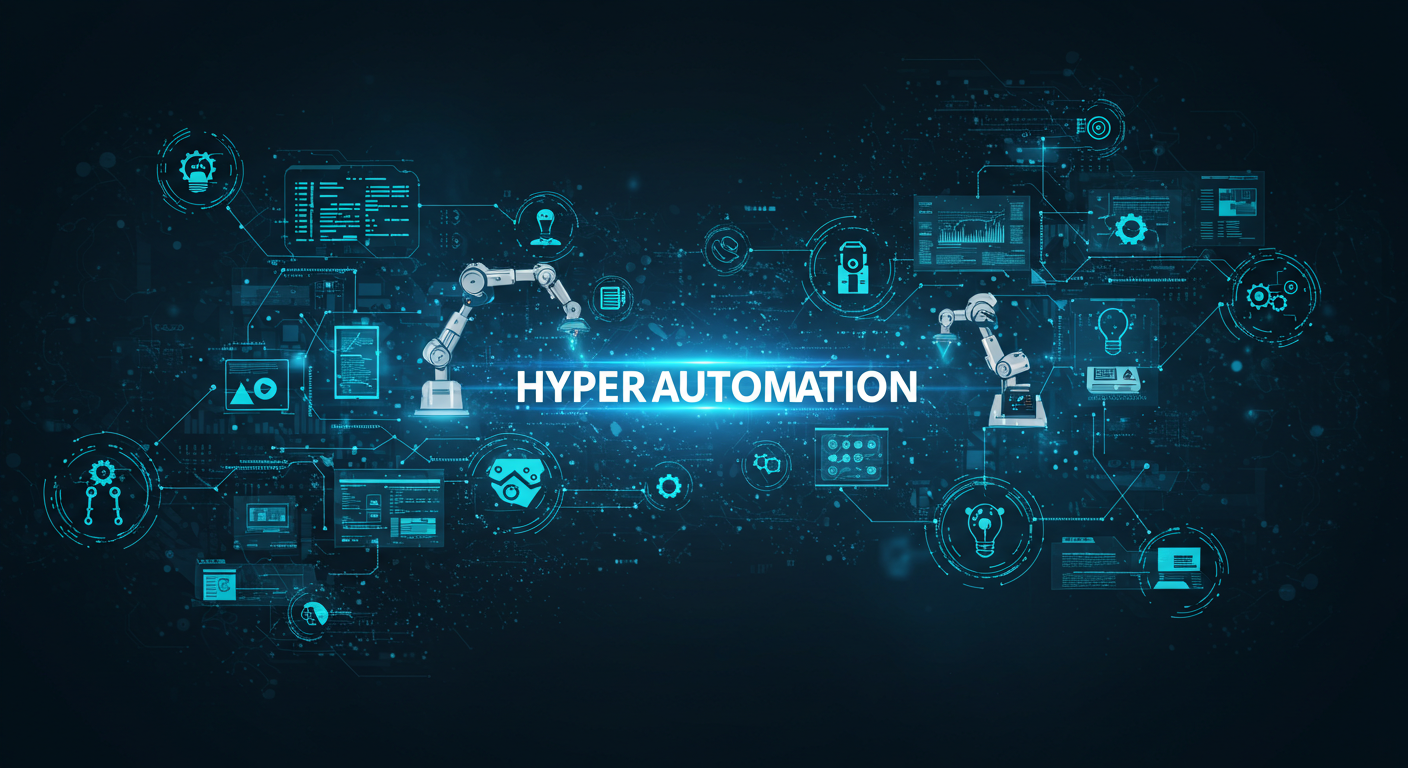What is Hyperautomation?
Hyperautomation is the next evolution of business automation, aiming to automate as many processes as possible across an organization. It goes beyond simple task automation, utilizing advanced technologies such as Artificial Intelligence (AI), Machine Learning (ML), Robotic Process Automation (RPA), and other cutting-edge tools. Hyperautomation integrates these technologies to automate complex workflows, improving efficiency, reducing costs, and enhancing productivity within organizations.

Key Technologies Behind Hyperautomation
Hyperautomation utilizes several key technologies that work together to automate complex workflows. These technologies allow businesses to automate tasks that were previously too intricate for traditional automation methods.
1. Robotic Process Automation (RPA)
RPA involves the use of software bots to automate repetitive, rule-based tasks, mimicking human actions in digital systems. It helps businesses reduce manual intervention and streamline operations by automating routine tasks like data entry, invoice processing, and more.
2. Artificial Intelligence (AI) and Machine Learning (ML)
AI and ML enable the automation of complex, decision-based tasks by learning from data. These technologies are crucial for functions such as fraud detection, predictive analytics, and customer service automation, allowing systems to adapt and improve over time.
3. Low-Code/No-Code Platforms
These platforms empower business users, even those with minimal coding skills, to create and deploy automation workflows. By simplifying the development process, these platforms accelerate automation adoption across departments.
4. Process Mining and Analytics
Process mining helps identify inefficiencies, bottlenecks, and areas where automation could provide the most value. It is a critical tool in optimizing automation efforts and ensuring that resources are focused on the most impactful areas.
5. Integration Platforms
Integrating various software tools and systems is essential for creating seamless workflows across an organization. Integration platforms facilitate real-time data sharing, ensuring that different applications work together to drive business results efficiently.
Why Hyperautomation is Crucial
- Improved Efficiency: By automating mundane tasks, hyperautomation helps reduce manual effort and speed up workflows, enabling businesses to focus on higher-value activities.
- Cost Reduction: Automation reduces labor costs by performing tasks that would traditionally require human intervention, leading to a more efficient allocation of resources.
- Accuracy and Reliability: Automated processes are less prone to human error, leading to better accuracy in operations such as data entry, processing, and analysis.
- Enhanced Agility: Organizations can adapt more quickly to market changes and business needs by relying on automated systems that are designed for scalability.
- Competitive Advantage: Hyperautomation helps businesses stay ahead of competitors by streamlining operations, improving customer experiences, and optimizing resource utilization.
Hyperautomation in Action
Hyperautomation has proven its value across various industries:
- Healthcare: Automates billing, appointment scheduling, and patient record management, improving accuracy and patient experience.
- Banking and Finance: Reduces operational costs by automating transactions, compliance checks, and customer service processes.
- Retail: Streamlines supply chain management, inventory tracking, and customer interactions to boost profitability and customer satisfaction.
- Manufacturing: Optimizes production lines, inventory management, and maintenance schedules, improving overall operational efficiency.
Benefits and Challenges of Hyperautomation
While hyperautomation offers substantial benefits, such as increased efficiency, cost savings, and improved customer satisfaction, it also presents challenges. These include the complexity of selecting the right tools, managing large amounts of data, and ensuring that employees have the necessary skills to adapt to automated processes. To address these challenges, organizations should focus on training and upskilling employees and integrating flexible automation systems that can scale with business needs.
By combining advanced technologies like AI, RPA, and machine learning, hyperautomation offers organizations the opportunity to streamline processes, reduce costs, and drive innovation. As businesses continue to embrace digital transformation, hyperautomation will become a key factor in achieving sustainable growth and maintaining a competitive edge.